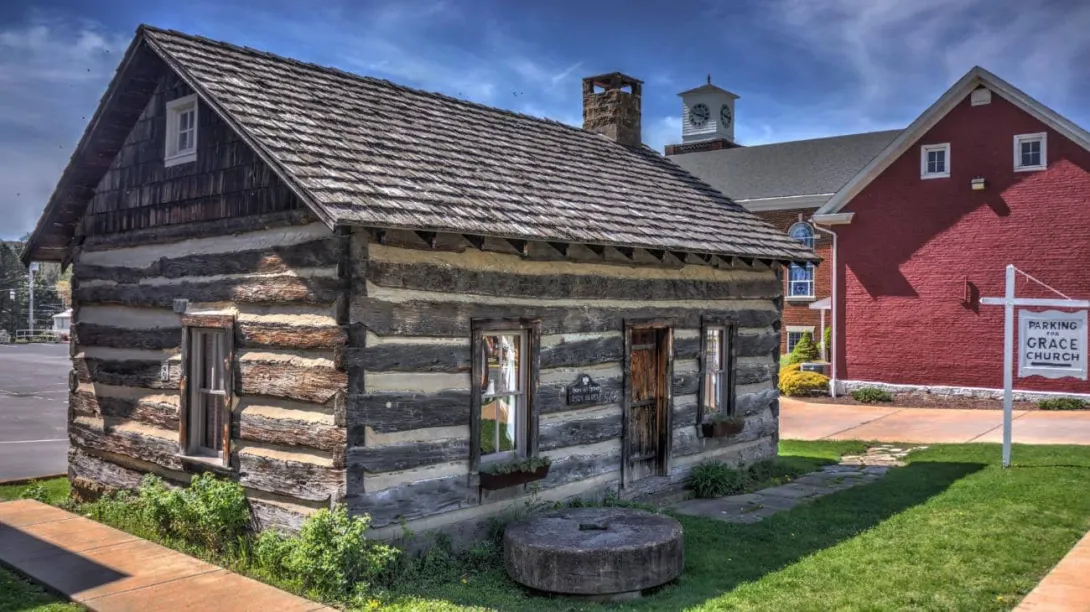The Harmony Museum's Junior Auxiliary is comprised of children who enjoy learning traditional crafts. They meet at the Zieglers' Log House throughout the summer. It is their job to keep the Log House clean. On the side of the house is an herb garden. It features 50 different plants with medicinal or culinary uses. Spearmint is typically distinguished by its strong aroma. There is also sage, catnip, rosemary, thyme, elderberry, rhubarb, and many others. Hops, which are used in the production of beer, are grown along the far corner of the building. The children dry and sell herbs. At Dankefest, they grind corn on the grinder for cornmeal for bread and muffins—the boys braid rope. Note the large grist wheel from the creek and the sundial on the building.
The log house was built in 1819 by one of the Ziegler family members. It was initially in Middle Lancaster, four miles north on Route 19. The logs were numbered as it was disassembled in 1973 and then reconstructed on this site. The beams are still of the original 1819 construction.
Initially, Zieglers' Log House had an entire second floor. The stairs would have been in the center, where there is a small cutout. There is now a loft for storage. The building is a log house because there is a wooden floor. If the flooring had dirt, it would be called a log cabin.
The children learn how to card and sort wool. They also learn spinning and weaving. Some members work on the large barn loom, which is warped. Rags are shuttled through the weft, creating a rug with a lined effect. Additionally, the children practice dyeing wool with natural vegetable dyes, such as carrot tops, blackberry shoots, onion skins, and black walnut shells, to achieve different shades. In the corner is a great wheel, also known as a walking wheel, which belonged to the first Mrs. Ziegler and dates back to the early 1800s. The woman walked four steps up and four steps back with the yarn. On spinning days, they would average over 20 miles per hour.The dough tray was used to make bread. The dough would be kneaded on the top portion and left to rise inside the tray. After rising sufficiently, the bread dough would be baked in a fireplace or oven. The other piece in the room is a dry sink. Water would be brought in from an outside creek or well. The sink would have a pitcher and basin for the water, and here the family could wash clothes and pour clean water from the pitcher for drinking. The table had a dual purpose: when the family finished their meal, the wooden piece would be cleared off, and then it would be removed and placed on the back of the bench. The bench could then be placed near the fire for family members to enjoy the warmth. The broom is hickory. It is made from one piece. The bark is sliced down and folded back to form the sweeping part.
